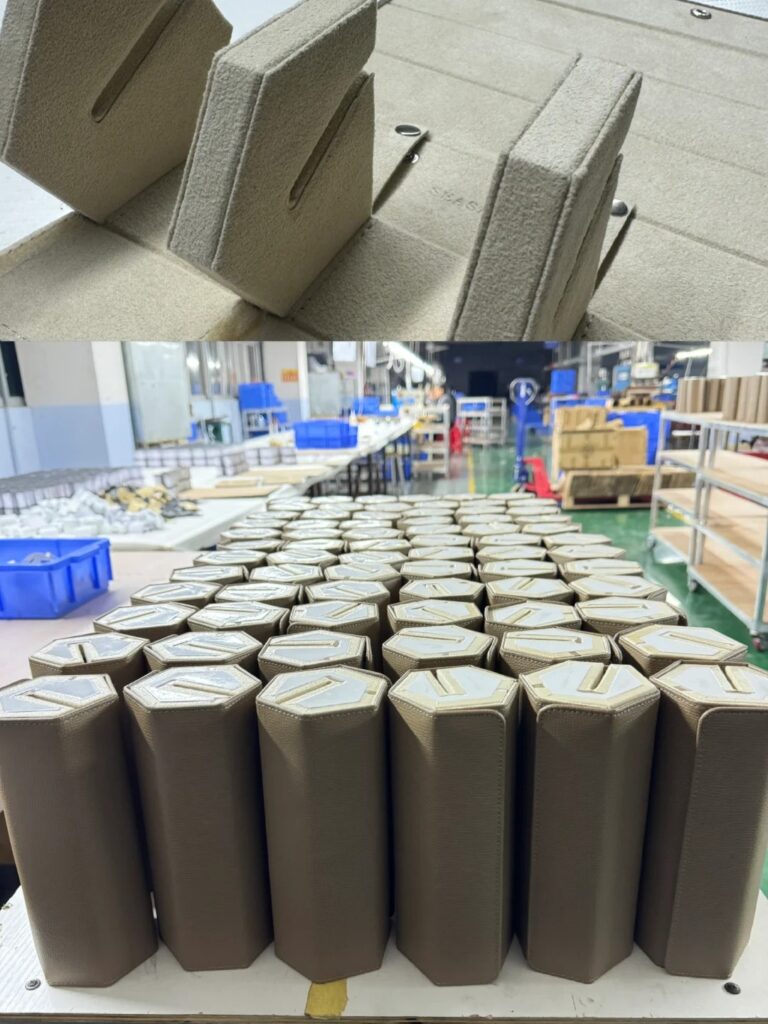Reducing Waste in Retail Displays: Tips for Sustainable Design and Manufacturing

How to Create Retail Displays That Are Eco-Friendly and Reduce Waste
By Yan Luo | Samtop Display
Table of Contents
Reducing waste in retail displays is no longer just an environmental choice—it’s a smart business strategy. By using modular designs, recyclable materials, and disassembly-friendly solutions, brands can cut costs, reduce landfill impact, and align with modern consumer values.
At Samtop, we help brands build custom retail displays that support their environmental goals through smart design and eco-conscious manufacturing.

Many retail displays are single-use, made from mixed materials that end up in landfills after a short life span.
This not only creates massive environmental waste, but also leads to unnecessary costs, logistical inefficiencies, and brand image risk in today’s eco-conscious market.
Implementing waste-reduction strategies through material choice, modularity, and sustainable partnerships can help brands reduce impact while enhancing value and flexibility.
♻️Key Strategies for Reducing Waste in Retail Displays
1. 🧩 Design for Disassembly
Why It Matters:
- Components can be easily separated and recycled at the end of the campaign.
- Enables reuse of materials across multiple campaigns or store locations.
- Supports reverse logistics and circular design initiatives.
Real-World Use:
Brands like Patagonia and Uniqlo now request displays designed for easy breakdown and material sorting.
Tip: Use snap-fit joints, magnetic fixtures, or tool-free fasteners to simplify disassembly.
2. 🧱 Embrace Modular Display Systems
Benefits:
- Reusable across locations and campaigns
- Reduces re-fabrication costs
- Allows on-site configuration to fit different store layouts
Example:
Use modular frames + interchangeable panels = transform a back-to-school display into a holiday-themed setup without building new units.
3. ✅ Use Recyclable or Recycled Materials
| Material | Recyclability | Best For | Sustainability Note |
|---|---|---|---|
| rPET (Recycled Plastic) | ♻️ High | Durable signage, holders | Made from plastic bottles, 100% recyclable |
| FSC Wood | ♻️ Medium | Permanent displays, risers | Responsibly sourced, reusable or compostable |
| Recycled Cardboard | ♻️ High | Temporary, seasonal campaigns | Affordable, lightweight, biodegradable |
| Metal (Aluminum) | ♻️ High | Structural frames | Long life, endlessly recyclable |
Tip: Always specify single-material builds or easy-to-separate materials for end-of-life recyclability.
4. 🔄 Partner with Sustainable Manufacturers
What to Look For:
- ISO 14001 or FSC certification
- Energy-efficient facilities
- Waste-reducing production techniques (lean, digital fabrication)
Bonus: These manufacturers often offer carbon footprint tracking, which you can include in sustainability reports or marketing campaigns.
5. 📦 Use Eco-Friendly Packaging for Displays
Strategies:
- Minimize protective packaging (e.g., remove shrink-wrap)
- Use recycled kraft paper, biodegradable fillers, or corrugated boxes
- Opt for reusable crates for transport between stores
Tip: For reusable displays, design transport-ready packaging to preserve components during redeployment.
Reducing Waste in Retail Displays: Seasonal Campaign Example”
| Traditional Display Approach | Sustainable Display Strategy |
|---|---|
| Foamboard and PVC discarded post-use | Recycled cardboard with water-based printing |
| Entire unit rebuilt each season | Core frame reused, only panels swapped |
| Bubble wrap shipping waste | Foldable crates and recyclable filler |
Result: Brands reduce up to 60% of display waste over a single year of seasonal rotations.
💬 FAQ
Q: How do modular systems help in reducing waste in retail displays?
✅ They allow brands to reuse structures across campaigns, minimizing the need for new materials and production cycles.
Q: What recyclable materials are best for reducing waste in retail displays?
✅ Cardboard, rPET plastic, aluminum, and FSC-certified wood are top options for eco-friendly, recyclable design.
Q: Does sustainable display design increase costs?
✅ Not necessarily. Upfront costs may be slightly higher, but savings from reuse, reduced disposal, and logistics make it more cost-effective long term.
Q: How can I communicate my sustainability efforts to shoppers?
✅ Add eco-badges on displays, tell your story in-store, and share behind-the-scenes design choices via social media.
✅ Final Thoughts: Smart Waste Reduction = Smart Business
✔️ Designing for sustainability doesn’t mean sacrificing creativity. With smart planning, brands can cut waste, save money, and connect more meaningfully with eco-conscious shoppers.
✔️ Modular displays, recyclable materials, and responsible partnerships are the pillars of next-generation retail design.
✔️ At Samtop, we help brands build smarter displays—better for the planet and better for your bottom line. Circular Economy in Retail – Ellen MacArthur Foundation
📩 Ready to Create Low-Waste Retail Displays?
At Samtop, we:
- Offer modular, recyclable POP display systems
- Help brands reduce packaging and disposal costs
- Provide green-certified manufacturing and full sustainability reporting
📧 Email: yan@samtop.com
🌍 Website: www.samtop.com
